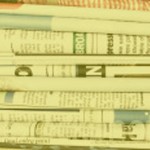Things We Read Today (36), Wednesday
The Only Thing Threatening the Economy?
Let’s stipulate that discussion of the condition of the economy is very susceptible to political biases. It’s complicated stuff, and the concept of “health” inevitably entails some degree of prognostication, and that’s always tricky business.
In that context, let’s just say that I’m picking up a bit of deliberate narrative building in an AP article by Christopher Rugaber, which the Providence Journal gave the title “U.S. optimism about economy on the increase“:
American consumers are growing more confident about the job market, companies are ordering more equipment and home prices are rising in most major cities.
The latest batch of government data suggests that the economy is improving just as the holiday shopping season begins. The only threat is a package of huge spending cuts and tax increases, known as the “fiscal cliff,” that will kick in unless Congress strikes a budget deal by year’s end.
“The only threat”? Not inflation? Foreign economic problems? Natural disaster? Or what about those nasty economic bubbles that have a way of taking us by surprise? Coincidentally, I just happened to come across some graphs today that suggest one bubble that we wonky types have been keeping an eye on: student loans. Apart from total student loans’ quickly closing in on $1 trillion, the third quarter of 2012 saw a giant uptick in both loans that have been delinquent for more than 90 days and loans that are newly delinquent.
The related release from the Federal Reserve Bank of New York has some unsettling news, if you look closely.
- Non-real estate debt was up 2.3%, to $2.7 trillion.
- More than one-fifth of all student loans that are currently supposed to be being paid back are more than 90 days delinquent.
- Mortgage and equity debt decreased $136 billion, even as new mortgage originations increased, to $521 billion.
Number 3 could imply that people are discharging their mortgage debt through foreclosure. If that’s a significant factor, then all three bullet points would seem to suggest that Americans increased their willingness to borrow money, but also increased their willingness not to pay it back. How long can that last?
Another Bad Score for Rhode Island
So, 24/7 Wall Street puts Rhode Island as the second-worst-run state in nation on its annual ranking. You can read the state-specific details here if you want, but I’ll just say that the worst thing about it is how common-place and boring it has become to come across these news items. That’s when things get dangerous.
Oh, and by the way, Rhode Islanders, here’s some more evidence, out of Great Britain, that raising taxes on the wealthy can indeed inspire them to find ways to move (or move their money) out of the taxable region:
In the 2009-10 tax year, more than 16,000 people declared an annual income of more than £1 million to HM Revenue and Customs.
This number fell to just 6,000 after Gordon Brown introduced the new 50p top rate of income tax shortly before the last general election. …
George Osborne, the Chancellor, announced in the Budget earlier this year that the 50p top rate will be reduced to 45p from next April.
Since the announcement, the number of people declaring annual incomes of more than £1 million has risen to 10,000.
Hey, maybe it’s all just coincidence. “Flight of the Earls” and all that.
The Incentive for Dependence (On Both Sides of the Equation)
On Anchor Rising, Marc Comtois has posted a chart that’s been making the Internet rounds today. As it happens, it was created by Pennsylvania Secretary of Welfare Gary Alexander, he of Rhode Island Medicaid waiver fame.
In essence, what it shows is that a single mother would have to make more than $69,000 per year for it to be worth her while to earn more than $29,000 per year. That’s because the available welfare benefits begin dropping at the low end of that range, and neither income nor benefits produce the same net amount until the high end.
That’s the incentive for working-class Americans to be increasingly dependent on government subsidies. In the context of the fiscal cliff debate, Bryan Preston gives some indication of the incentive for politicians to foster dependency (via Instapundit).
His thesis is that President Obama may not be bluffing on tax-hikes-for-the-rich in fiscal cliff negotiations with the Republican Congress. That is, his political incentives may be aligned such that he wouldn’t much mind if no deal is reached and the United States goes back into recession, which is what folks expect if that’s the outcome.
While a recession would be terrible for the country, it may not be terrible for the Obama presidency. Obama knows that he has the media standing by to blame Republicans for any failure to reach a deal, and he knows that there are enough low-information voters out there to believe whatever the media says. The media covered for him both on Benghazi and the fiscal cliff during the elections; it’s likely to keep covering for him. He also knows, based on his own re-election victory, that a terrible economy leads to more dependency on government, which leads to more people seeing him and his party as the guarantors of their government benefits. This dynamic is a very effective way to kill arguments favoring smaller government. Who needs abstractions and Milton Friedman when there’s no food on the table?
This is crazy conspiracy stuff from the paranoid conservative fringes, right? He may (or may not) be incorrect, but Preston’s analysis certainly isn’t unreasonable. Back in September, I pointed out some relevant statements in that not-infamous-enough 1998 recording of then-state-Senator Barack Obama talking about building a political coalition out of welfare recipients:
Grouping recipients of such services across “race and geography,” Obama said, would become “a useful means for coupling policy with politics.” The resulting coalition of people who depended on government in one way or another would allow activists to advance their other, separate causes.
Yes, Social Security Is a Budget Problem
This post by Veronique de Rugy is a good follow-up to my assessment of Senator Sheldon Whitehouse’s thoughts on Social Security. Says de Rugy:
But things will get extra costly long before 2033 or 2035. Since 2010, Social Security has been running a permanent cash-flow deficit. That means that taxes collected for the program aren’t enough to cover the benefits paid to retirees. According to USA Today’s rebuttal to Durbin, the Office of Management and Budget’s “Analytical Perspectives” document (p.465) shows that in 2010, the gap was $36 billion, in 2011 it was $48 billion, and in 2015 it will be at least $86 billion.
To fill the gap, the program is drawing from the trust-fund balances (first using interest, then the principal) to keep payments to retirees going; in concrete terms, Treasury will have to borrow money to pay back the trust funds. The federal government doesn’t have the money to pay the trust fund back because it spent everything on stimulus,wars, education, green jobs, and more typical government consumption. Thus, in order to repay the program so it can continue to pay out benefits today at the promised levels, the federal government has to borrow more money. In the future, it could also increase taxes to get more revenue, or print more money. None of these options are good for the American people.
Continuing to Advance “Progress” from the Wrong Angle
The political Left learned long ago (and did much to establish the precedent) that when something can be presented as a “civil right,” no practical evidence arguing against it — whether empirical, logical, anecdotal, or celestial — needs to be seriously addressed. At this point in American history, journalists aren’t even bothering to provide much coverage of opposing arguments, much less anything amounting to evidence.
Today’s example comes from AP reporter Paul Elias on a lawsuit by female “service members… challenging the Pentagon’s ban on women serving in combat” (tried from San Francisco, naturally). As an afterthought at the very end of the article, Elias writes that “military leaders say they want to make sure lifting gender-based barriers would not disrupt the cohesion of the smaller combat ground units and military operations.” But that’s a minor concession at the end of an article offering many supportive statements for the policy change.
Forgive me for being retrograde, here, but I can’t help but think of Iraq veteran Laura Cannon’s recent essay in the Washington Post:
Now throw us into a war zone, and things get really wild. …
I had no idea that a combat zone would be such a sexually charged environment. Blame it on amped-up testosterone pouring out of aggressive, athletic men. Or blame it on combat stripping even the strongest of men and women down to their core, raw emotions. Combine that with forming special bonds with comrades who promise to do whatever it takes to ensure your safe return home, including sacrificing their life for yours. What do you think happens?
I don’t know whether what “happens” falls under the category of “unit cohesion” in a positive or negative sense, but it seems to me it would have taken very little effort for Elias to find out.




